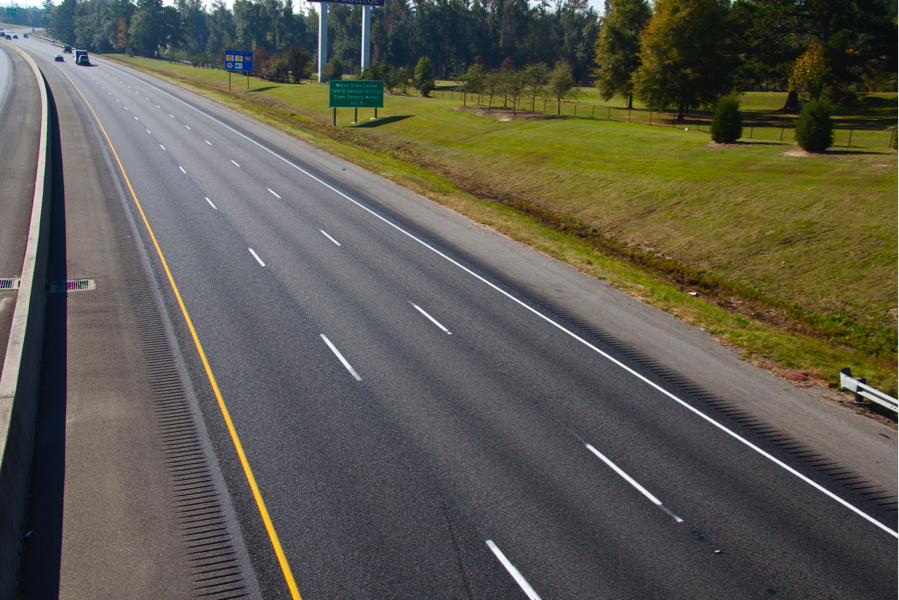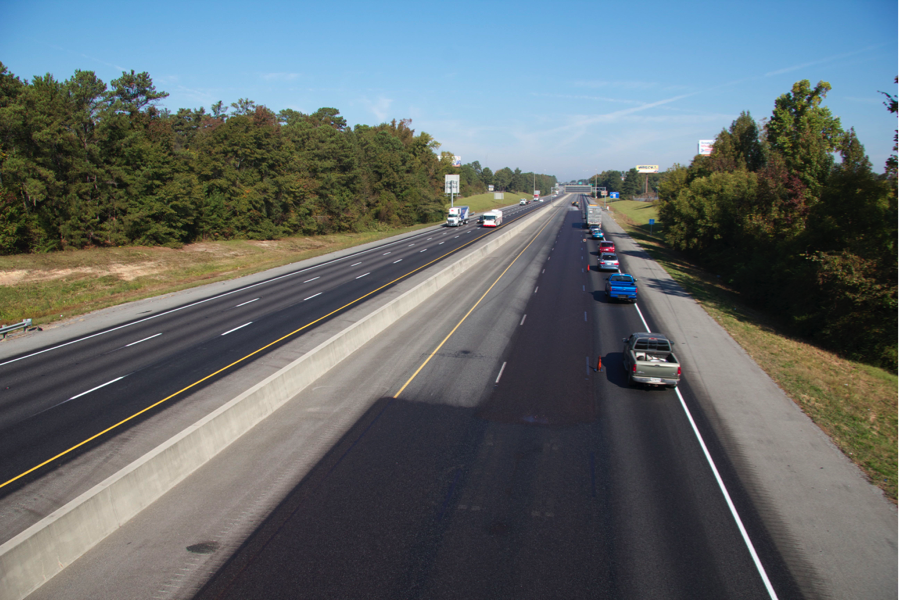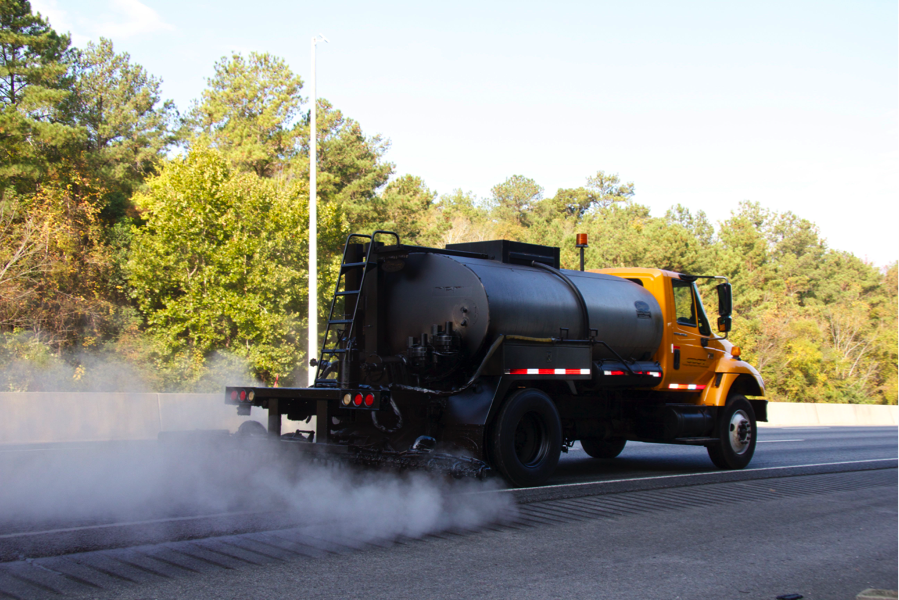
Background
Interstate I-475 Maintenance Project
Georgia’s interstate system has some of the highest quality pavements money can buy: open graded friction courses (OGFCs). These mixes make excellent wearing surfaces due to their high friction properties and surface permeability. OGFCs are much safer to drive on during heavy rainfall than dense graded surfaces because the mixture is designed to significantly reduce vehicle spray. However, this same quality makes OGFCs susceptible to raveling, particularly in areas that experience frequent snow and ice, and areas of severe sunlight. They are also expensive to maintain. In the case of Interstate 475, just like many other roads across the country, there simply wasn’t enough money in the state’s budget to repave the aging roadway. As it reached 12 years of service life, I-475 experienced preliminary raveling, and in some places, total section loss. The Georgia Department of Transportation (GDOT) needed a way to preserve approximately 90 lane-miles of the six-lane road until they could afford a more long-term solution.

After considering a number of possible preservation solutions, including a micro mill and inlay, GDOT decided that a rejuvenating fog seal would be the best solution, due to its easy application process and low cost, compared to other options. Ergon Asphalt & Emulsions, Inc., recommended eFog rejuvenating fog seal as the most effective pavement preservation solution for this situation.
Rejuvenating fog seals correct more severe distresses than a conventional fog seal and can extend the service life of OGFCs by three years or more. eFog, part of the e-Series family of pavement preservation and maintenance products, is manufactured with a polymer-modified asphalt base, which provides a denser film thickness compared to conventional fog seals, increasing durability and resistance to tracking. Its rejuvenating qualities restore essential elements in the existing asphalt that are lost due to oxidation from UV exposure and during the mix manufacturing, storage and application processes. eFog is also capable of carrying traffic as soon as 30 minutes after application. This is important for heavily trafficked roadway systems, such as I-475, where a quick return to traffic is crucial.
Application Highlights
Under the supervision of District Maintenance Engineer Clay Moore, GDOT’s District 3 maintenance crews initially applied the rejuvenating fog seal to the road surface at a rate of 0.14 gallons per square yard. Bill Evans, Ergon A&E’s East Region Technical Marketing Manager, noticed the pavement was quickly absorbing the emulsion and recommended increasing the rate to 0.20 gallons per square yard. This proved to be the ideal application rate, as it completely coated the exposed aggregate. Crews applied between 10,000 -11,000 gallons of eFog rejuvenating fog seal per day. Bill worked to ensure ample supply of eFog, which was produced at Ergon A&E’s emulsion plant in Garden City, GA. Both he and Daniel Sapp, Ergon A&E Area Sales Manager, were on site nearly every day until the project was complete, offering advice on best practices for application and traffic control.

The project lasted approximately five weeks with warm temperatures and negligible weather delays. To keep traffic interruptions to a minimum, GDOT strategically closed down small portions of the roadway over the duration of the project. District 3 maintenance staff applied the eFog to these closed sections, restriped the pavement and quickly moved on to the next portion of the roadway.
It’s not typical for fog seals to be used on a high-speed pavement, as there is a temporary reduction in friction associated with the application. GDOT was aware of this possibility, but determined that the risks associated with a temporary reduction in friction could be minimized with the proper safety precautions. In this instance, they elected to close lanes to traffic the entire evening after an application. Friction numbers on OGFCs are naturally high to start, so the temporary reduction had no impact during the project or in subsequent months, as friction rates returned to normal.
Results and Long-Term Strategy
GDOT was pleased with the overall results, and is evaluating the potential for more interstate projects using eFog. GDOT, along with a research group from the Georgia Institute of Technology (Georgia Tech), will continue to monitor the pavement over the next few years to determine how well the rejuvenating fog seal treatment holds up under the heavy traffic load.
Cost Savings
This project has saved taxpayers millions of dollars, by responsibly extending the service life of 90 lane-miles of I-475.







